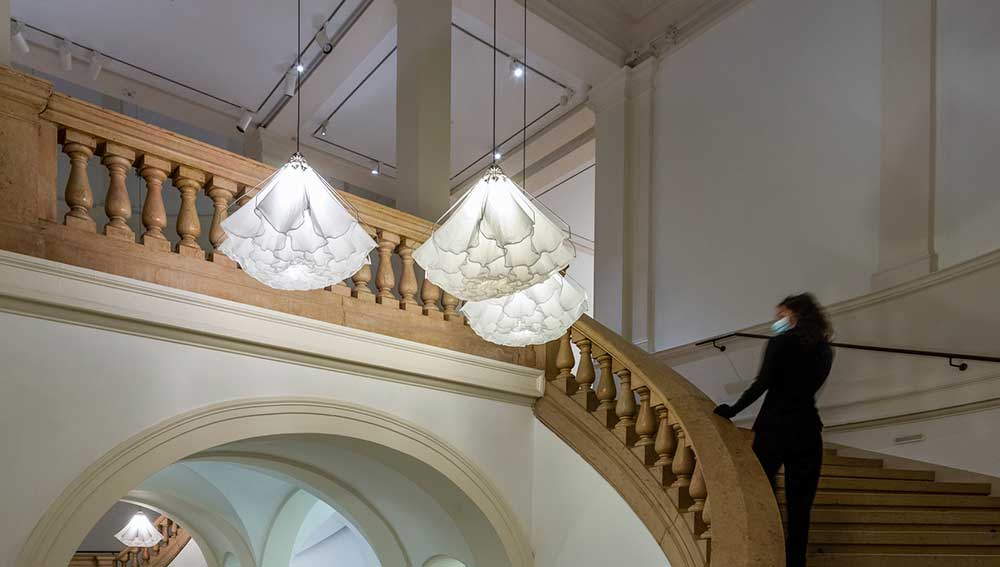
Studio Drift. Shylight, 2006. Choreographed light installation, silk, aluminum, stainless steel, elektronics, motors, software. Photo: Henning Rogge.
Museum für Kunst und Gewerbe, Hamburg
7 January – 8 May 2022
by VERONICA SIMPSON
In their Instagram biography, Studio Drift – AKA artists and interaction designers Lonneke Gordijn and Ralph Nauta - describe themselves as “future choreographers using the frequencies of nature to create experiential art”. Watching their installation Shylights, it is instantly evident that they do indeed have a gift for choreography, as well as storytelling. Six of these Shylights have been installed, in threes, either side of an ornate staircase in Hamburg’s Museum für Kunst und Gewerbe (Museum for Art and Crafts, MK&G). The design and programming of these ethereal creatures – part parachute, part umbrella, part sea-creature – has been finessed to the point where they appear more alive than engineered, and it is all through that telling gesture, those choreographed movements that seem utterly naturalistic.
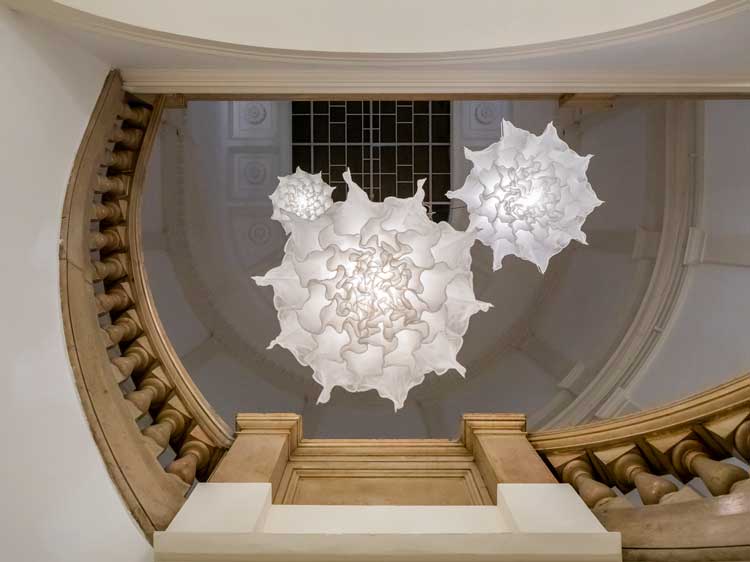
Studio Drift. Shylight, 2006. Choreographed light installation, silk, aluminum, stainless steel, elektronics, motors, software. Photo: Henning Rogge.
One moment, they hesitate up high, skirts drawn in, restrained by the confining hoops strategically placed below the pulley-mechanisms in the ceiling. Then one of them extends its skirts a little and hovers, frills flouncing just below that hoop. Then the second one follows, then the third, and then they swiftly and unanimously retract, as if startled by something unexpected - like sea anemones prodded by an unwelcome visitor. Then, after waiting a few beats more (gathering their courage, perhaps?) they swoop down in a great swirl, their frilly, illuminated skirts billowing out in a glorious halo of white fabric, descending all the way to the lower staircase. This hypnotic dance plays out to a tinkling piece of music by Philip Glass. It is enchanting to watch – in the way that Pixar’s early animated films were game-changers for digital animation, thanks to the animators’ skill at capturing the spirit and personality of each character, whether desk lamp or children’s toy; never mind their flat, digital origins and presentation, they feel three-dimensional to their audiences.
Indeed, animation turns out to have been a major inspiration for the practice, as Gordijn explains in a mini-documentary for the duo’s first major solo show, Coded Nature, in 2018, at the Stedelijk Museum in their home town of Amsterdam. She says: “Those objects have to stir up certain emotions in people. Also in ourselves, otherwise we’re not interested. We have discovered that, in order to evoke emotion in our work, we should animate the work like you would animate a character, in such a way that you develop feelings for that work.”
Like those pioneering animators at Pixar, Studio Drift’s genius lies in the evident hours of close attention paid to their subjects – though, in this case, it is how plants and creatures move and explore their environment - along with an apparently deep affinity with that world and its wonders.
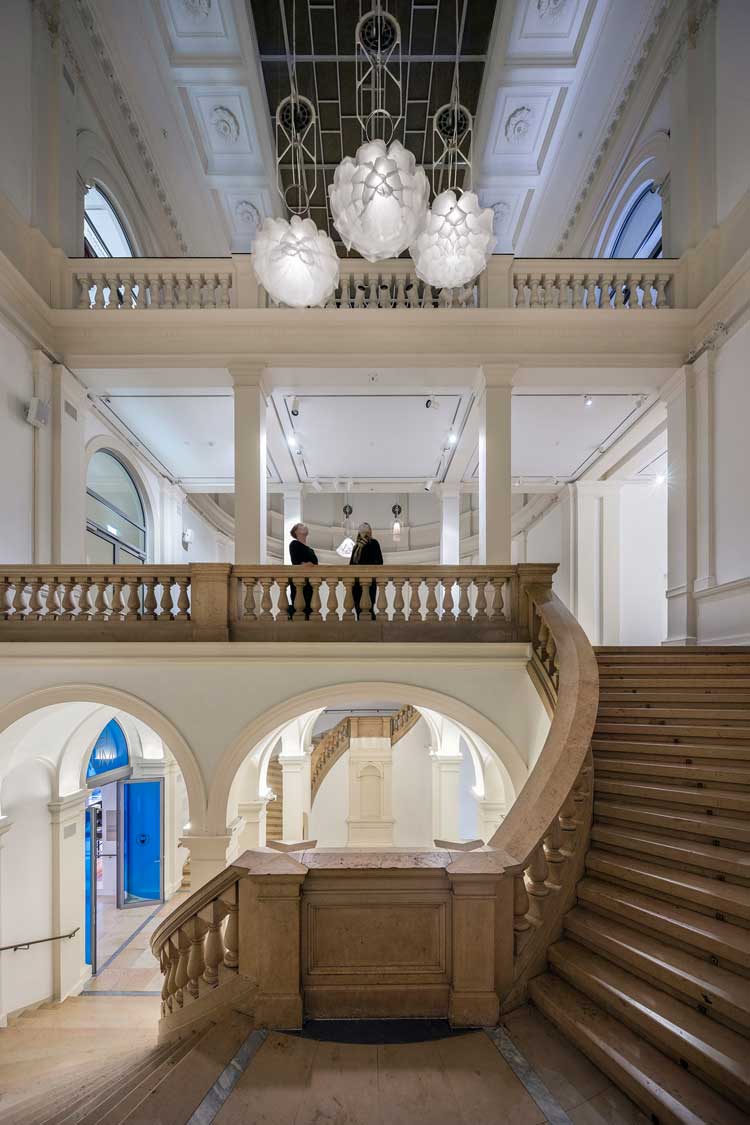
Studio Drift. Shylight, 2006. Choreographed light installation, silk, aluminum, stainless steel, elektronics, motors, software. Photo: Henning Rogge.
Tech meets nature is an evergreen dynamic in contemporary art: especially in the digital sphere, though often the result is imitative; few can harness nature’s complex geometries or rhythms in a way that reveals more about nature than technology. With Shylights, it is the balance of skill and simplicity in the design and programming that reminds us of what is so wonderful about the natural world; watching these frilly creatures at play expands our awareness of life forms other than our own, but life forms that are both alien and familiar, whose instincts and impulses are completely legible to us. They have the power to surprise, to challenge assumptions, to captivate and question. There is a “ghost” in this machine and that ghost is, unquestionably, the human spirit.
The same is true in the installation up the stairs: In 20 Steps. Explaining the inspiration for it, also in the Coded Nature documentary, Gordijn says: “The work In 20 Steps is very much about the dream of flying. How do we handle that as humans? How do we analyse how to achieve that? We divide it into steps. So, In 20 Steps is a very abstract way of saying: this is what flying is like. This is our human interpretation of what flying is about.”
The installation runs down the centre and almost along the whole length of a large gallery, a translucent structure of glass tubes - 20 pairs, secured in the middle by pivoting metal joints - is rippling up and down. Its mechanism is redolent of skeletons, of spinal columns, but the movement is evocative of many flowing animal forms, not just birds; it is a thing almost as much aquatic as aerobatic. And its mesmerising motion is made more magical by the fragility and glitter of these glass tubes, so soundlessly and elegantly animated by the wires that suspend and power this subtle machinery from the ceiling. The glass tubes are, of course, stiff and unyielding but, as with Shylights, the expert choreography and pace, just the right side of slow-motion, mean that this brittle piece communicates grace, softness and power.
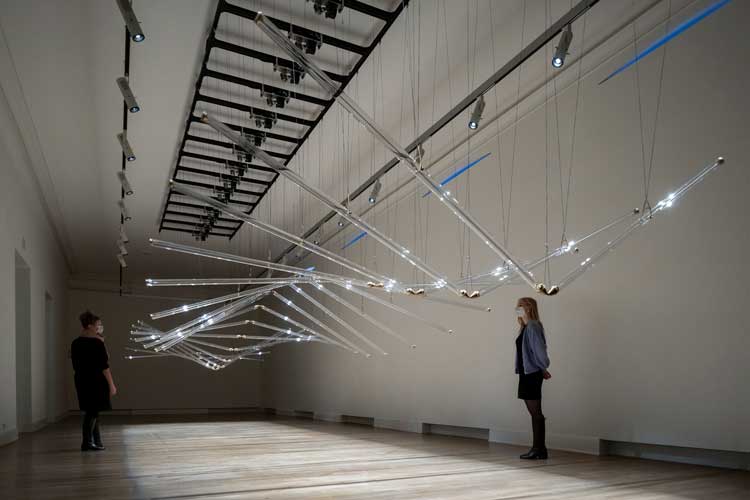
Studio Drift. In 20 Steps, 2015. Kinetic sculpture, glass, brass, dyneema, elektronics, motors, software. Photo: Henning Rogge.
The final installation at MK&G is Fragile Future, one of Studio Drift’s earliest works – its first iteration was part of Gordijn’s final MA show at Eindhoven Design Academy, where she and Nauta met. Meditating one day on the stark transformation of a dandelion’s yellow-petalled form into the fluffy, wispy, flying-seed stage, she realised that the dandelion head is the same size as a small LED battery cell. So, she cooked up a chandelier from a circuit board grid made of copper wire, adorned with LED cells, to each of which she painstakingly glued hundreds of dandelion seeds. Since that early version, and its first museum appearance, in 2015 at the V&A’s What Is Luxury? exhibition, it has grown in scale and is here arranged across a whole gallery.
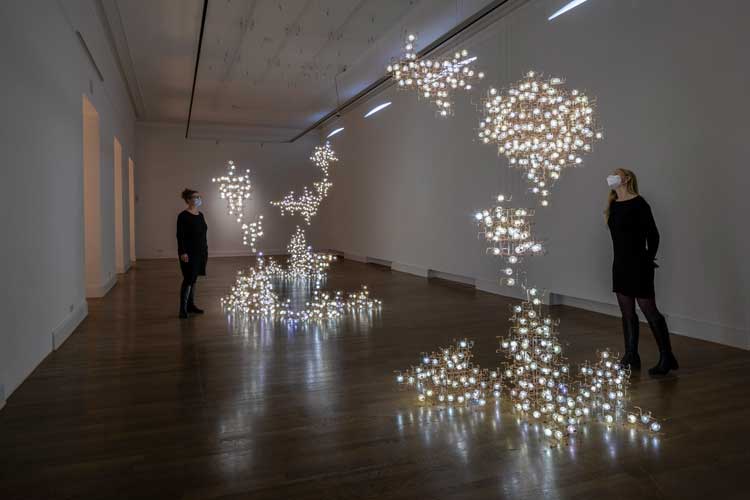
Studio Drift. Fragile Future III, 2005. Light sculpture, phosphor bronze, dandelions, LED, electronics. Photo: Henning Rogge.
The gossamer delicacy of these seedheads on the glowing lamps gives off an aura more captivating up close than it is from afar. Again, there is that sense of the alien clashing with the familiar, and yet more of that clever choreography. Though this work is static, the LED daffodil heads are deployed across these irregular frameworks as if at the moment of being blown up into the wind, or across a field. In the YouTube documentary, Gordijn says: “A discovery we made with Fragile Future was that those natural seeds connect so perfectly well to electronics that it suddenly didn’t seem like totally different worlds any more. While I used to view technology as nature’s enemy, this completely dissolved and found a balance. And that is what Fragile Future is all about.”
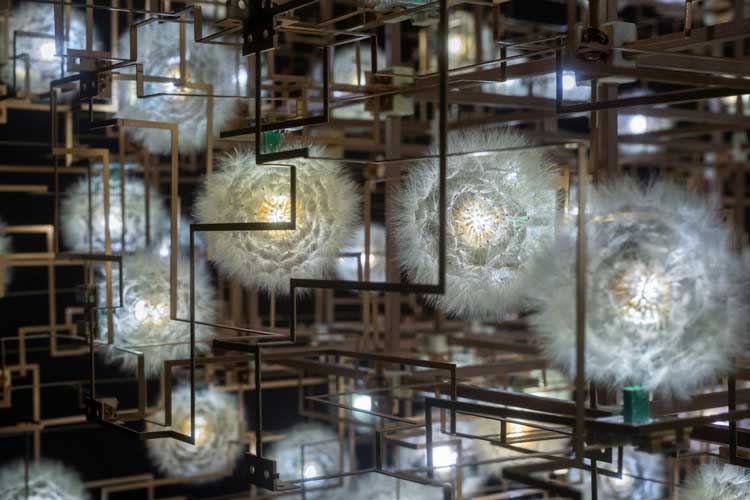
Studio Drift. Fragile Future III, 2005. Light sculpture, phosphor bronze, dandelions, LED, electronics. Photo: Henning Rogge.
It was this work that first caught the attention of the MK&G curator and director Tulga Beyerle in 2011, and she has been watching Studio Drift’s rise to greater prominence with interest. Listed by Architectural Digest as one of this year’s AD100, the duo now has a studio team of 50, including drone specialists and architects, and their commissions for outdoor artworks have grown more spectacular and more ambitious, including an extraordinary drone-powered light sculpture for the 2021 Burning Man festival. Beyerle jumped at the chance of showing them here, having suggested to the directors of Hamburg’s iconic Elbphilharmonie - a world-class concert hall with a crested roof of glass, by Herzog & de Meuron - that Drift would be the perfect choice for an artwork to celebrate the building’s fifth anniversary. It was intended for the birthday concerts in January, but pandemic lockdowns hindered the delivery of the components, so this outdoor spectacular will not now be revealed until April.
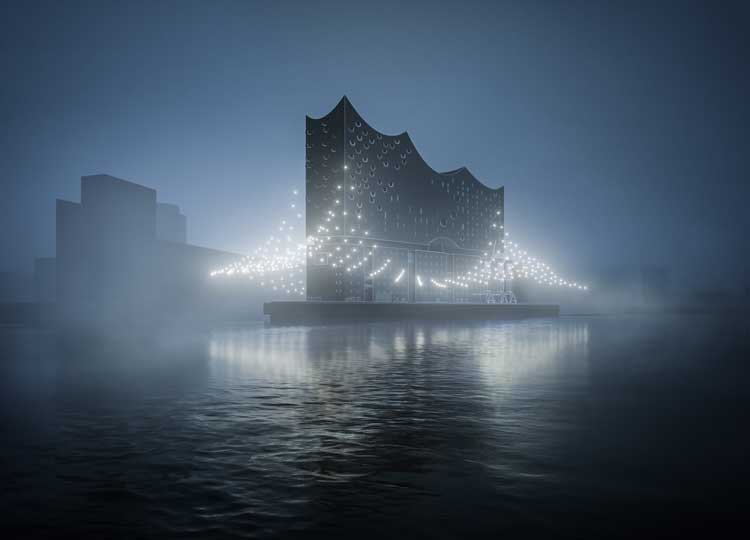
Studio Drift. Rendered image of Breaking Waves, Elbphilharmonie Hamburg, © Moka Studio.
Performances of Breaking Waves featuring hundreds of illuminated drones drifting around the exterior of the Elbphilharmonie Concert Hall, choreographed to the second movement of Thomas Adès Concerto for Piano and Orchestra, will take place after nightfall on 28 April – 1 May 2022.